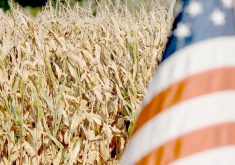CANADA IS using one of few tools at its disposal by requesting a dispute settlement panel through the World Trade Organization over the United States’ damaging country-of-origin labelling regulations.
Now that two rounds of WTO consultations have brought no result, Canada is within its rights and true to its responsibilities in taking the dispute to its next level.
If it gets Americans’ attention and encourages further Canada-U.S. consultation, so much the better.
COOL, with its mandatory labelling requirements on many foods including meat, has cost millions in lost revenue for the Canadian livestock industry. American regulations require U.S. packers and processors to segregate and label meat by country, causing additional expense that discourages those processors from buying animals from other countries.
Read Also

Stacking Canada up on gene editing livestock
Canada may want to gauge how Argentina and other countries have approached gene editing in livestock and what that has meant for local innovation.
Compared to 2008 totals, Canadian exports of slaughter cattle are down 16.6 percent, while feeder cattle and calves are down 51 percent. On the hog side, slaughter hog exports are down 53 percent and feeder hogs 27 percent. These reductions are largely attributable to COOL.
For Canada, which relies heavily on exports for its livestock industry profitability, COOL represents losses to livestock producers totalling billions of dollars.
Countries have the right under trade regulations to label food. But COOL dictates that meat cannot be labelled as a product of the U.S. unless all aspects of its production – birth, feeding and slaughter – occurred in the U.S.
According to world trade rules, however, when an imported good is transformed into another form, it is deemed to originate from the country where the transformation occurred. So, when a Canadian-born animal is slaughtered in the U.S. its meat should be labelled as U.S. product.
That hasn’t been the case.
Instead, COOL involves five different labels, based on the countries in which the animal was born, fed and slaughtered. The administration and expense discourages American feeders and packers from buying Canadian animals.
WTO dispute resolution is not quick but it is well proscribed. It involves formal panel request, panel establishment, interests expressed by other countries, written submissions, hearings, rebuttals and a panel reporting process.
WTO members then decide whether a trade agreement or obligation has been violated and recommend what measures, if any, should be taken. There is also a mechanism for appeals.
In the COOL case, resolution would be unlikely before the middle of 2011 at the earliest, assuming Canada is successful in its quest.
Even then the U.S. could refuse to comply with recommendations, which would entitle Canada to impose sanctions of various types.
Thus it can take years to reach resolution on a trade dispute, which is why federal agriculture minister Gerry Ritz prominently mentioned ongoing dialogue and diplomatic efforts while the WTO matter winds its way through the process.
As he correctly noted in an interview, Canada must use the tools available to fight its battles, and this battle is worth fighting.
Bruce Dyck, Terry Fries, Barb Glen, D’Arce McMillan and Ken Zacharias collaborate in the writing of Western Producer editorials.














